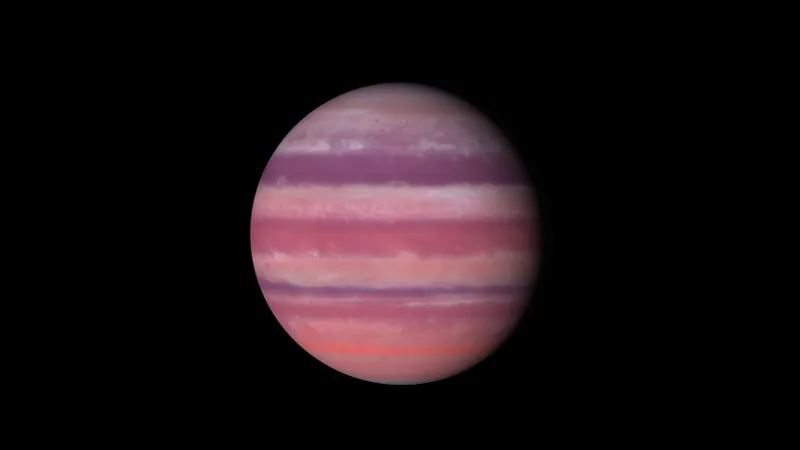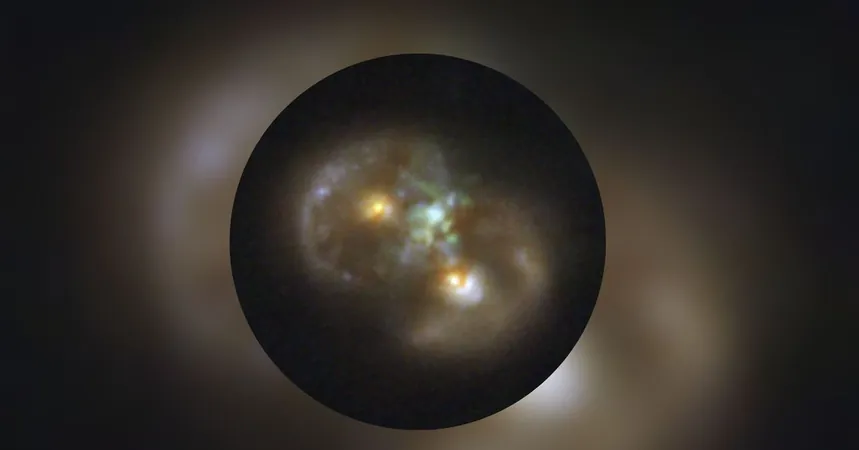
Astronomers Unveil Massive Hidden Planet 35 Times Earth’s Size in Familiar Star System!
2025-07-15
Author: Mei
In a groundbreaking discovery, scientists have identified a hidden giant exoplanet in the Kepler-139 star system, which has baffled astronomers for years. Named Kepler-139f, this colossal world dwarfs Earth, boasting a mass 35 times greater and twice that of Neptune, while orbiting its star every 355 days.
The revelation of Kepler-139f comes from meticulous analysis of the orbits of known planets within the system. Initially, NASA’s Kepler space telescope, which has unearthed nearly 3,000 exoplanets, faced limitations due to its reliance on direct transits—when planets pass in front of their stars, causing a dimming effect that signals their presence. This meant that planets like Kepler-139f, which travel in an inclined orbit outside this line of sight, went unnoticed.
The Hunt for Kepler-139f
Despite this challenge, astronomers employed creative methods to deduce the existence of Kepler-139f. The Kepler-139 system includes three rocky super-Earths and a previously identified gas giant, offering clues that suggested more planets could be lurking within. Gaps in the existing orbits hinted at the potential for undiscovered worlds.
Caleb Lammers, a graduate student from Princeton and co-author of the study, emphasized how combining different techniques was crucial, stating, "The key isn’t just finding these elusive planets, but locating them through the gravitational interactions they have with known planets." By examining variations in transit timing (TTVs) and conducting radial velocity (RV) measurements, they were able to uncover the elusive Kepler-139f.
Unlocking the Secrets of Kepler-139e
This newly identified planet enhances our understanding of the system, especially regarding Kepler-139e, an outer gas giant previously thought to have an unusually high density. The discovery of Kepler-139f resolves some inconsistencies, hinting that the earlier observations may have mistakenly attributed some gravitational effects to Kepler-139e.
The Quest for More Alien Worlds
The universe may still hold countless other hidden worlds, particularly in systems like Kepler-139. Lammers pointed out that there could be additional undiscovered planets, especially given the notable gaps observed. The challenge remains to unearth and confirm these mysteries that orbit far from their host stars.
Methods like transit timing variations and radial velocity are essential in this search, but as missions evolve, so too will our ability to detect smaller, distant planets. Future projects, such as the European Space Agency's PLATO mission set to launch in 2026, promise to refine these techniques, reinvigorating the quest to unveil the hidden corners of our universe.



 Brasil (PT)
Brasil (PT)
 Canada (EN)
Canada (EN)
 Chile (ES)
Chile (ES)
 Česko (CS)
Česko (CS)
 대한민국 (KO)
대한민국 (KO)
 España (ES)
España (ES)
 France (FR)
France (FR)
 Hong Kong (EN)
Hong Kong (EN)
 Italia (IT)
Italia (IT)
 日本 (JA)
日本 (JA)
 Magyarország (HU)
Magyarország (HU)
 Norge (NO)
Norge (NO)
 Polska (PL)
Polska (PL)
 Schweiz (DE)
Schweiz (DE)
 Singapore (EN)
Singapore (EN)
 Sverige (SV)
Sverige (SV)
 Suomi (FI)
Suomi (FI)
 Türkiye (TR)
Türkiye (TR)
 الإمارات العربية المتحدة (AR)
الإمارات العربية المتحدة (AR)